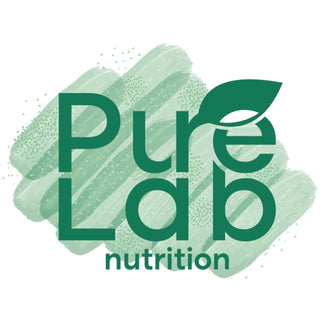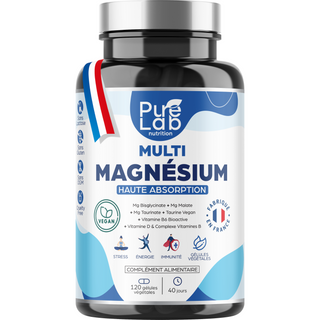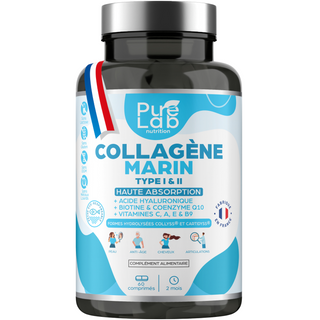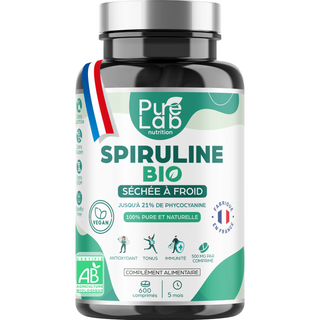A troubling question is circulating in nutrition circles: do our fruits still contain as much vitamin C as they once did? Recent studies suggest an alarming decline in the nutrient density of our food over the past several decades 📉. This reality raises major questions about our ability to cover our nutritional needs through food alone.
Nutritional evolution: a worrying observation 📊
Figures that make you think 🔍
Comparative analyses of current nutritional data with those from the 1950s and 1960s reveal a worrying trend. The micronutrient density of many fruits and vegetables has apparently decreased significantly, particularly affecting water-soluble vitamins such as vitamin C.
This degradation is not limited to vitamin C but also affects other essential nutrients: B vitamins, minerals and trace elements all seem to be affected by this development.
A global problem 🌍
This phenomenon is not confined to a specific region but affects all industrialized countries. Modern agricultural systems, despite their advantages in terms of productivity, seem to have a negative impact on the nutritional quality of the food produced.
The causes of this impoverishment 🔬
Intensive agriculture in question 🚜
Modern agriculture prioritizes yield and disease resistance over nutrient density. Varieties bred for productivity are not necessarily those with the highest nutrient density.
Soil depletion, a result of decades of intensive farming, limits plants' ability to access the nutrients needed for optimal vitamin synthesis. This creates a vicious cycle in which each generation of fruit becomes less nutritious than the previous one.
The challenges of the production cycle 📦
Transport and storage 🚛
Food globalization imposes significant logistical constraints. Fruits often travel thousands of kilometers before reaching our plates, during which time vitamin C, which is particularly unstable, gradually degrades.
Preservation techniques, while effective at preserving appearance and flavor, do not always optimally protect vitamin content. Exposure to light, temperature fluctuations, and oxygen contribute to this degradation.
The fragility of vitamin C 💧
This water-soluble vitamin is extremely sensitive to many environmental factors. Exposure to air, heat, light, or even certain metals can cause its rapid destruction.
This natural instability explains why losses can be considerable between harvest and consumption, even under optimal storage conditions.
Impact of our consumption habits 🏠
Home preparation and preservation 👨🍳
Our preparation methods directly influence the final vitamin C content of our foods. Simply cutting, grating, or blending a fruit exposes its cells to oxidation, triggering rapid enzymatic degradation.
Cooking, even lightly, can drastically reduce vitamin C concentration. This heat sensitivity explains why raw fruits generally retain higher nutritional value than their processed counterparts.
Home storage 🏡
Even in our refrigerators, vitamin C continues to degrade. Storage time, humidity, and the presence of other ethylene-producing fruits accelerate this degradation process.
These "silent" losses accumulate and can represent a significant portion of the total degradation between purchase and consumption.
Solutions and optimization strategies 💡
Favor freshness and proximity 🌱
Short circuit and seasonality 📅
Consuming seasonal fruits, harvested when ripe and sold locally is the best strategy for maximizing vitamin C intake. This approach reduces the time between harvest and consumption, limiting nutritional losses.
Farmers' markets, AMAPs (Associations for the Maintenance of Peasant Agriculture) and self-picking offer interesting alternatives for accessing more nutritionally rich products.
Optimal preservation techniques ❄️
Proper storage can significantly limit vitamin loss. Maintaining a low temperature, limiting exposure to light, and consuming quickly after purchase are the foundations of effective preservation.
Immediate freezing after harvest can sometimes preserve vitamin C better than several days of storage at room temperature.
Alternative Agriculture: Myth or Reality? 🌿
Organic meets expectations 🔍
Contrary to popular belief, organic farming does not systematically guarantee a higher vitamin C content. While it offers undeniable environmental benefits, the impact on nutritional density remains variable depending on the species and growing conditions.
Organic methods can nevertheless promote better soil health in the long term, a prerequisite for improving the nutritional quality of production.
Old varieties and genetic diversity 🧬
A return to traditional varieties, often neglected in favor of more productive hybrids, could be a promising avenue. These varieties, historically selected for their taste and nutritional qualities, sometimes have superior vitamin profiles.
The preservation of food biodiversity therefore represents a nutritional as well as an environmental issue.
Supplementation: a modern necessity? 💊
Assessment of real needs 📋
Faced with this deterioration in nutritional quality, the question of supplementation becomes legitimate. A personalized assessment of actual intake, taking into account eating habits and lifestyle, can inform this decision.
Needs vary depending on age, physical activity, health status and even the season, making an individualized approach essential.
Combined and balanced approach ⚖️
Supplementation should not replace a varied diet, but rather complement it intelligently. Maintaining a high intake of fresh fruits and vegetables while ensuring optimal intake through other means is the most sensible approach.
This hybrid strategy allows one to benefit from the multiple beneficial compounds of natural foods while compensating for potential deficiencies in specific nutrients.
Future prospects 🔮
Agricultural and nutritional innovation 🚀
Current research is exploring new approaches: nutrition-oriented varietal selection, cultivation techniques optimizing nutritional density, and even conservation methods that better preserve vitamins.
Precision agriculture, guided by the detailed analysis of the nutritional needs of plants, could revolutionize the nutritional quality of our food.
Awareness and education 📚
A better understanding of the factors influencing nutritional quality can guide our consumer choices towards practices that are more beneficial for our health.
This collective awareness could also influence the food supply towards products of better nutritional quality.
Conclusion: adapting our nutritional strategies 🎯
The decline in the nutritional density of our fruits poses a major challenge for modern nutrition. Without being alarmist, we must adapt our strategies to maintain optimal vitamin C intake 🌟.
This situation invites us to rethink our relationship with food: prioritize quality over quantity, promote short supply chains, and consider sensible supplementation when necessary. The goal remains to fully benefit from the benefits of this essential vitamin, regardless of changes in our food environment 💚.


